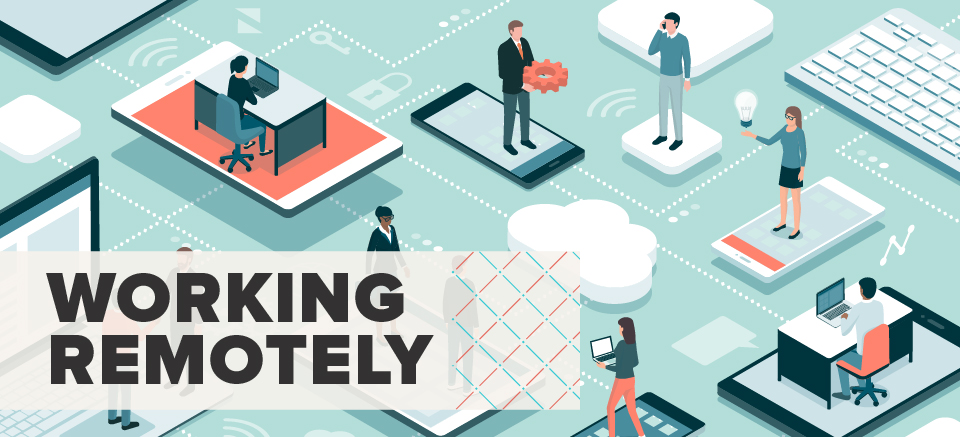
While more and more employees today desire the flexibility of working remotely, for many small to medium-sized business owners, it can be a seemingly daunting policy to implement. From questions about how to prepare infrastructure for remote access to concerns about your team’s productivity, there are many things to consider.
Though it is a great perk for many, during times of crisis, it can also become an important business continuity strategy. Right now, as we face the uncertainties of the coronavirus pandemic, many business owners are wondering if and how they can carry on business operations while simultaneously caring for the health and safety of their employees. Whenever possible, working from home is a great solution to both of these concerns.
For nearly ten years, the work environment at Brew Agency has been set up to be completely mobile, and we have always encouraged off-site workspaces when needed. If you think your business is ready to take on remote work but you’re not sure how to get started, we have some insights to share about what has worked for us in developing a high-performing, remote-ready team.
1. Put your files in the cloud
If your company does not have a remote server already in place, using tools like Dropbox and Google Drive makes it easy to access files from any location, from any device. These software platforms are easy to set up and cost effective for small businesses with an immediate need to go mobile. Google Docs and Google Sheets allow for file sharing and live collaboration where teams can access, edit and even work simultaneously on the same file.
Implementing policies like a file organization system and which files must be synced in the cloud ensures that everyone on the team has access to what they need and knows where to find it.
2. Keep communication constant
When working remotely, communication is key. We’ve found that over-communicating can help clear up any confusion or questions that may come about from lack of face-to-face communication. We request that all Brew team members communicate their location and available working hours, and that they be reachable by phone and instant messaging for live communication and updates. A few great tools for live collaboration are Google Chat, Slack or GroupMe, and some of these tools have features that show when your team members are online and enhance on-the-fly communication.
Cloud-based phone systems help provide remote voicemail features and online dashboards for managing phone numbers and telecommunications online. Gage Cloud Voice by Gage has all the features you’ll ever need to work remotely.
3. Video conferencing improves engagement
Whenever possible, virtual face-to-face team interaction is critical while working to maintain effective communication and problem-solving. It helps team members feel more connected and engaged, especially during a time when solidarity is needed. Google Hangouts and Zoom are both great tools for video conferencing. Hangouts is especially great when a quick check-in or casual meeting is needed, while Zoom tends to be more robust for planned meetings with larger groups.
4. Hold daily AM and PM check-ins
At the beginning of each day, hold a 15-minute video conference call with your team. We call these sessions “huddles” and groups should be limited to no more than about eight employees. Each team member should report what tasks they plan to accomplish that day. At the end of the day, we encourage each person to report when they are signing off and a recap of what they accomplished that day. This can be done by email to their supervisor or through an end-of-day 15-minute huddle with the team.
5. Remote Work Agreement
If a work-from-home arrangement is granted for the long term, consider defining your terms and expectations in a written Remote Work Agreement, to be signed by both the employee and management. Being clear about the responsibilities and expectations upfront will help curb conflicts and questions down the line.
There’s no doubt that mobile workspaces can be a challenge to team communication, time management and project efficiency. Keeping up with tasks, progress and communication are essential to any business’ success. While these procedures and policies may not apply to every business, we hope it provokes some ideas on how to encourage business continuity in times of uncertainty.



